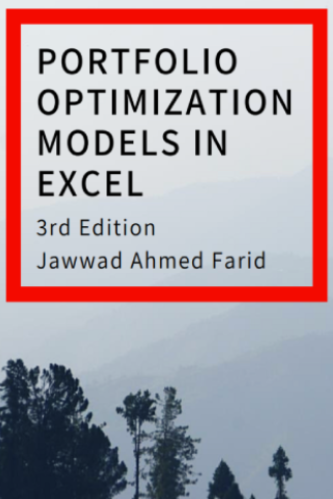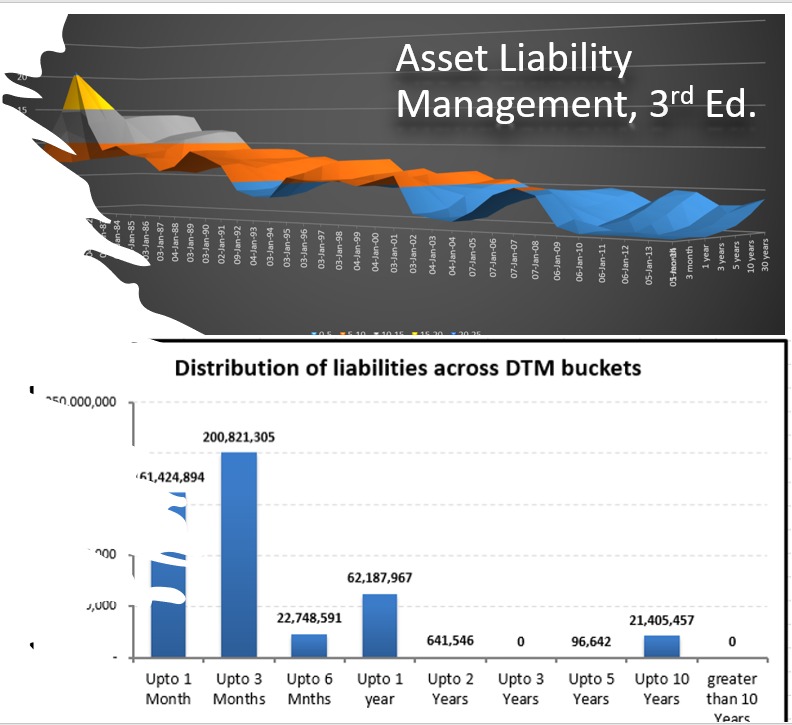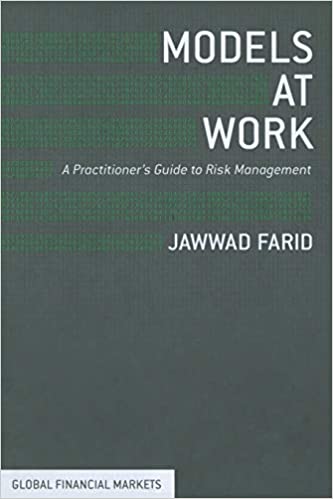Jawwad Farid Books

At its heart Founder Puzzles is not a book about building better excel models for businesses. It is a book about building better businesses, right from the start.
Much cheaper to do it in Excel than with blood, sweat, tears and capital. Founder Puzzles shows you how to do all this faster as a founder. How to use simple frameworks in Excel to identify winning choices by asking the right questions.
Live cases walk through modelling revenues, unit economics, sizing markets, investor mindset, valuation land mines and founder risks.
Four years in the making the book summarizes twenty years of experience as a serial founder and as a mentor to startup teams in the region. Twenty years of committing or witnessing every single mistake in the book.

Portfolio Optimization Models in Excel presents the foundations of a scalable framework that evolves as markets around us evolve. It includes just enough theory to ensure that we understand philosophical foundations of the subject and critically analyze optimization models for strengths, weaknesses and breaking points so that we can answer the question – Which allocation model is better and leads to stable robust returns?
Portfolio Optimization Models in Excel does one thing well. Using a step by step approach, it clearly shows how to turn that thing into an Excel model that works. If you want to teach and test students on the theoretical foundations of the field, this is not a good book. If you want to play with allocation models, debate performance attribution, detect patterns in a ten-year data set, solve abstract problems using real world prices and talk intelligently about real world implementations, this could be the book for you.

A popular real life account of the failure of Jawwad Farid’s first venture in Southern California. The book revolves around two years Jawwad spent between Columbia Business School in New York and at his startup in Santa Ana; raising funding, building, launching an online education business and ultimately failing in May 2001. The failure set the stage for self introspection and Jawwad’s adventures in risk and treasury management. His next idea Alchemy Technologies (risk reporting for banks) takes off and becomes the foundation for his work as an adjunct Professor of Entrepreneurship and Risk Management in Middle East and Far East. The book is now in its third edition and has been downloaded and used extensively by founders, entrepreneurs and professors all across the world in dissecting the life of a founder with all his blemishes, heartbreaks and failings.

The course is aimed primarily at banking professionals and individuals responsible for asset liability management and risk management within banks, insurance companies and mutual funds who need to review or refresh their understanding of ALM and Capital Adequacy regulations for work, professional review, audit or personal development. Building upon the foundation of gap management and interest rate mismatch, we cover duration, convexity, impact of interest rate changes on net interest income and economic value of shareholder equity. For historical context we review key movements in treasury rates from 1980 to 2014 as well suitable mismatch strategies for shifts in the yield curve.

The book is about building intuition around risk and using simple tools in EXCEL to test that intuition against the real world and occasionally with economic drivers. Taleb calls it “playing with the generator function”. My mentors in the field have called it the “Build, Test, Dissect, Decode” mode of learning. Till you figure out how to break it, you won’t really learn how it works. The book shows you how to build some models, shares the framework that you can use to test and stretch the same and in some instances gives you the data to extend them. But it stops short of putting it all together. It will show you the way and partially unlock the door, but you have to make the effort to open it and walk inside. This book is for you if you ever wondered about risk, risk assessment and risk management and their usage in the real world; if you wanted to model risk but felt awed by the terminology; if you like to question assumptions and test them in EXCEL; if your board is a “What if” board and you want to put a better process around that one troubling question; and if you wanted to be a quant, but like me, are not.

This is a book about teaching intuition. Intuition for a topic that despite its importance to trading desks, doesn’t get fair coverage in business school text books or the student side of the academic world. This morning when I asked a colleague about the coverage of Vega, Vanna and Volga in his examination materials for a well respected risk management exam, I was informed that it amounted to just under three paragraphs. Only one of which was relevant, the other two were for background. It’s just as bad as it used to be for convexity two decades ago. It is not that there is a shortage of material on the subject. When it comes to Option Greeks, the topic catches the fancy of PhD students all over the world. We have an abundance of high quality research papers, practitioner hand books and publications but not enough class time for entry level students or professionals. God forbid if you are fresh arrival in the field, a recent hire at a trading desk or even worse the internal risk management group, learning and getting comfortable with the language is a task. The challenge is scaling the wall of terminology, notation and context before you can decipher the literature available in the field.BUY NOW
